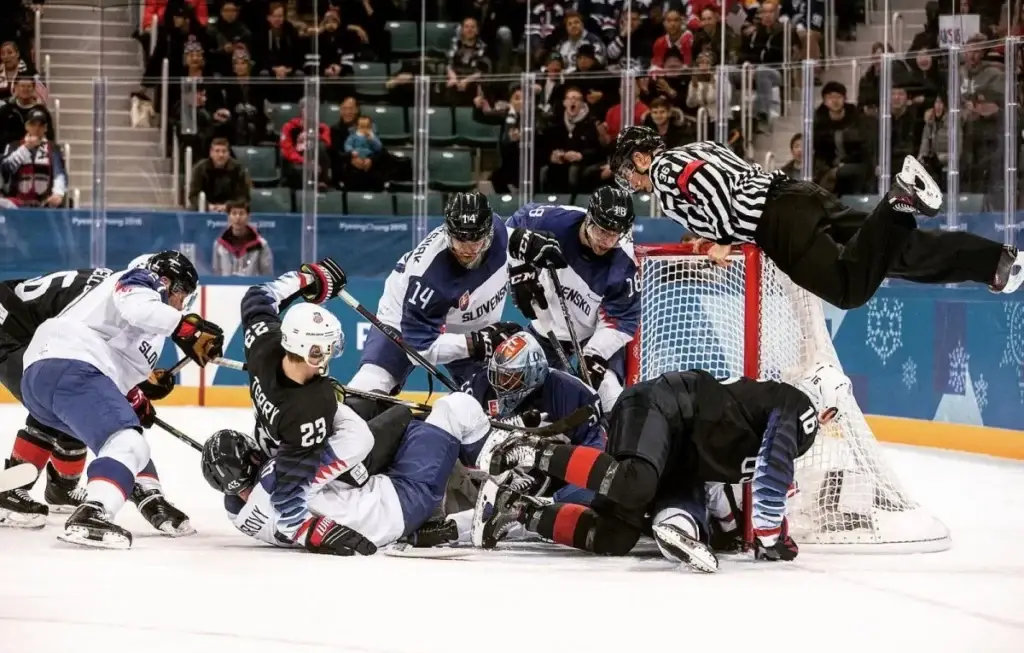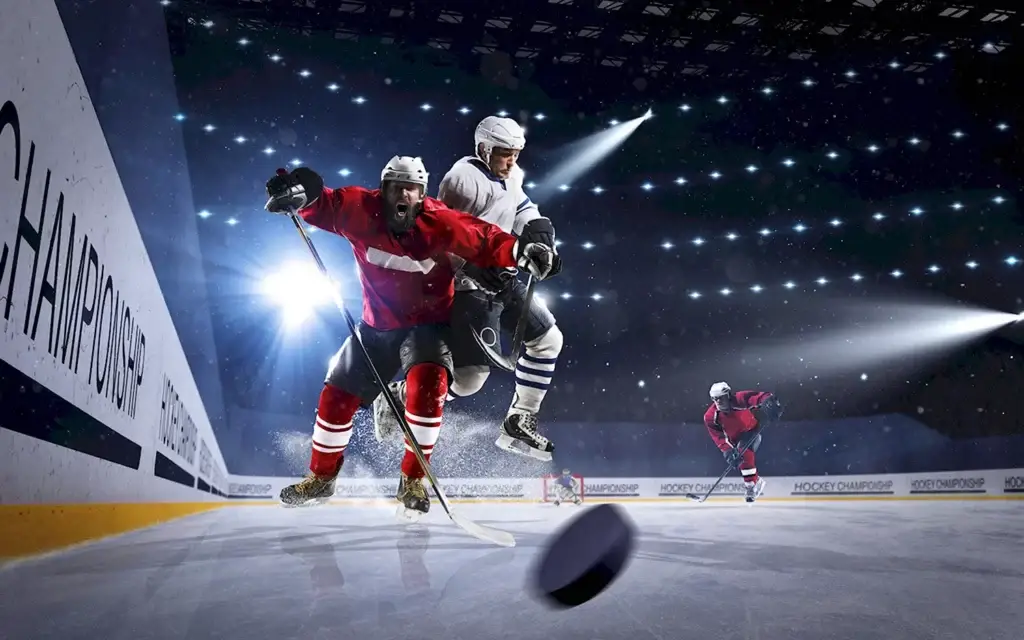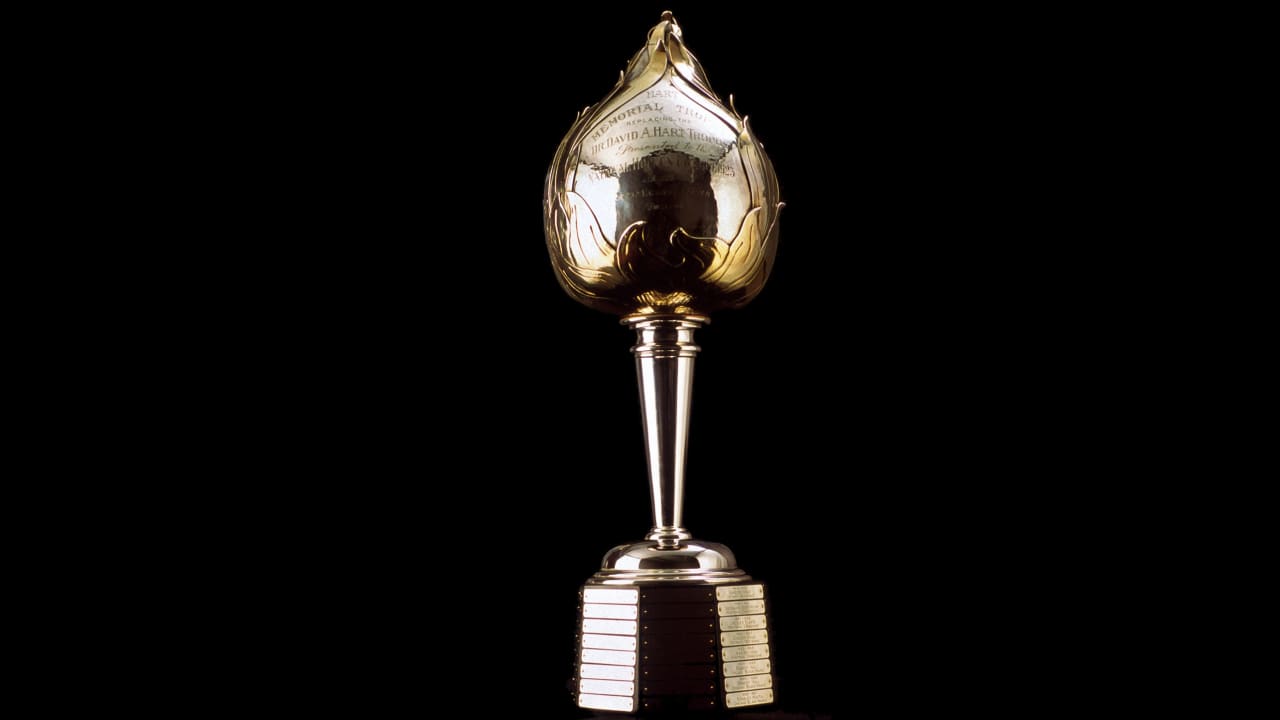During ice hockey matches, incredible events take place on the ice that you want to watch: cold harmonises with hot emotions, and thousands of spectators follow the ups and downs of teams representing different hockey leagues. Because of the popularity of the sport, there are many more leagues than just the NHL and KHL. They are found in many parts of the world, from North America to Asia. Each forms its own unique traditions and approaches to the game. Let’s understand which leagues exist and how they interact with each other, creating a multi-layered and complex system of hockey on a global level.
The best hockey leagues in the world: from the NHL to exotic championships
Professional hockey leagues occupy a special place on the world hockey map, setting the highest standards of play and attracting millions of spectators.

NHL
At the top is the National Hockey League, which sets the tone for all of world hockey. Formed more than a hundred years ago, the NHL united teams from the United States and Canada. Players give spectacular competitions and show a high level of professionalism. The NHL values not only physical data, but also skill, tactics and the ability to make decisions under pressure. The league has become a symbol of quality hockey, bringing together the best players from all corners of the planet.
KHL
The Kontinental Hockey League is considered to be the second most important league, covering Russia and neighbouring countries. The KHL aims to compete with the NHL: attracting the best players and impressing with features like wider ice and a more tactical approach to the game. Established in 2008, the KHL has already established itself as a powerhouse on the hockey scene, uniting under its banners many clubs ready for a tough fight for the Gagarin Cup.
European leagues
In addition to these two giants, there are others that deserve attention. For example, the Finnish Liiga stands out for its youth skills and strong team spirit, emphasising teamwork and understanding.
From Canadian to Asian championships
Tournaments are organised in various parts of the world that contribute to the development of hockey. The Canadian Hockey League (CHL) combines three junior leagues and is the main supplier of young talent to the NHL. Players coming through the CHL gain irreplaceable experience and training for a professional career.
Asian hockey leagues aim to popularise hockey in the East. In Japan, South Korea and China, ice hockey is in an active stage of development and participation in the Asian league allows teams to gain experience and improve their skills. Australia and New Zealand also have their own leagues, where hockey is becoming an increasingly popular sport.
In Latin America, hockey is just starting to gain popularity, but teams are already being created and competitions are being organised. Some African countries are also developing in this direction: hockey clubs have started to appear there. This shows that the geography of the sport is expanding and its popularity is increasing.
How is the ice hockey league organised?
 Each league consists of several phases: regular season, playoffs and finals. During the regular season, teams play each other according to a predetermined schedule, earning points for wins and draws. These points determine their position in the standings and their ability to qualify for the next stage, the playoffs.
Each league consists of several phases: regular season, playoffs and finals. During the regular season, teams play each other according to a predetermined schedule, earning points for wins and draws. These points determine their position in the standings and their ability to qualify for the next stage, the playoffs.
The playoffs are an elimination system, where teams fight for the right to participate in the finals. At this stage, it doesn’t matter how many points have been accumulated in the regular season – every mistake can cost you a trip to the next round. This is why the playoffs attract so much attention from fans, turning every game into an exciting battle.
Organising a hockey league also involves funding, sponsors, selling broadcasting rights and marketing. Organisers attract investors and create conditions for the development of infrastructure, including ice arenas, training centres and medical services.
Ice hockey championships: professional and amateur championships
Tournaments can be divided into:
- Professional Championships: The NHL and KHL showcase the highest level of competition, where athletes who have dedicated their lives to hockey play. They feature the best teams and are watched by millions of fans around the world. Professional hockey leagues ensure high standards of play and create serious competition among players and teams.
- Amateur championships fulfil an important role in the development of local sport. They take place at the regional league level and provide an opportunity for young and aspiring players to demonstrate skills and gain experience of the game. Such events attract local residents who support their teams and actively participate in the sporting life of the region.
Amateur leagues often become a launching pad for future hockey stars who then move on to professional clubs. One is closely interconnected with the other and plays an important role in the development of hockey.
The difference between the KHL and the NHL: European and American approaches to ice hockey
Two different approaches to organising hockey that reflect the cultural and geographical characteristics of the regions.
The NHL emphasises speed and physical power. Teams play on a narrow section of ice, which allows for more power plays and spectacular moments. The KHL, on the other hand, uses a wider ice, which helps the players have more time to make decisions and demonstrate their tactical skills.
The difference applies not only to the playing field, but also to approaches to training, youth development and league management. The NHL has a strict salary cap system, which helps to maintain a balance between teams and keep competition at a high level. In the KHL, however, club funding is more important, which creates differences between teams depending on their sponsors and opportunities.
Despite the differences, both leagues attract the best players and are the centre of attention for the hockey world. Players often move from one league to the other in an effort to test themselves in different environments and gain new experiences.
Conclusion
 Hockey leagues play a crucial role in the development of hockey: they shape professional and amateur sport, create conditions for the emergence of new stars and popularise the game on different continents. The NHL, KHL and even local amateur championships make a unique contribution to the development of a spectacular sport. The leagues continue to inspire, nurture champions, and bring inexpressible excitement to fans around the world.
Hockey leagues play a crucial role in the development of hockey: they shape professional and amateur sport, create conditions for the emergence of new stars and popularise the game on different continents. The NHL, KHL and even local amateur championships make a unique contribution to the development of a spectacular sport. The leagues continue to inspire, nurture champions, and bring inexpressible excitement to fans around the world.

 en
en  ru
ru  de
de  ar
ar  es
es  hi
hi  fr
fr  nl
nl  it
it  pt
pt  el
el 



